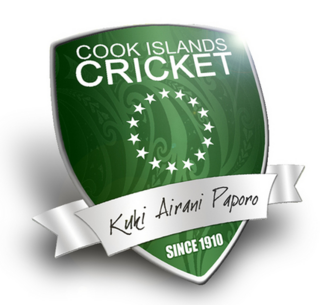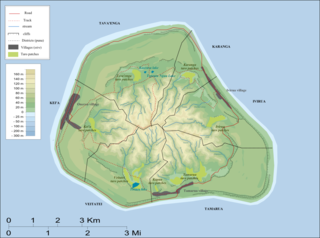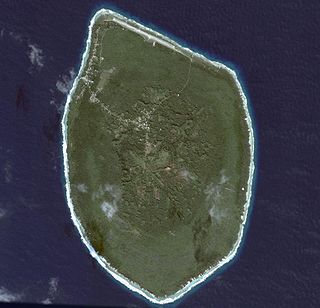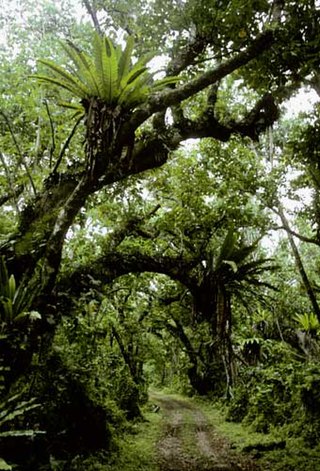Overview of Islands subdivided in Tapere
| Island | Number of Districts | Number of tapere |
|---|---|---|
| Aitutaki | 8 | 19 |
| Atiu | 6 | 6 |
| Mangaia | 6 | 38 |
| Mauke | 4 | 11 |
| Rarotonga | 5 | 54 |
| Total | 29 | 128 |
- Aitutaki
- Atiu
- Mangaia (only districts)
- Mauke
(German Map) - Rarotonga
A Tapere or Sub-District is a low level of traditional land subdivision on five of the Southern Cook Islands (Rarotonga, Mangaia, Aitutaki, Atiu, and Mauke), comparable to the ahupua'a of the main Hawaiian Islands or to the kousapw of Pohnpei. Among the populated raised islands, only Mitiaro is not subdivided into tapere. The remaining Southern Cook Islands, Manuae, Palmerston and Takutea are atolls and/or uninhabited, and therefore not subject to this type of traditional subdivision. The atolls of the Northern Cook Islands are subdivided into motu (populated atoll islets), instead.
A tapere is a subdivision of a district (the major island subdivision) or puna, which is headed by a district chiefs or Pava (in the case of the Island of Mangaia). A tapere is normally headed by a mataiapo (a chief of a major lineage) or ariki (a High Chief, the titular head of a tribe). It is occupied by the matakeinanga, the local group composed of the residential core of a major lineage, plus affines and other permissive members. [1]
Most of the tapere lands are subdivided among the minor lineages, each of which was headed by a rangatira or kōmono , or by the mataiapo himself. [2]
Below that level, there is the uanga, the extended family, the residential core of which occupied a household. [1]
Historically, taperes were almost always wedge-shaped - the boundaries beginning at defined points on the outer reef and running inland to enclose an ever narrowing strip of land until converging at a point in or near the center of the island. By this type of delineation, any one tapere included every category of soil type and land surface of the island, from the typically mountainous interior, where forest products were collected, through fertile valleys where the major food crops were grown, across the rocky coastal strip of elevated fossil coral (makatea), out to the lagoon and fringing reef. [3]
| Island | Number of Districts | Number of tapere |
|---|---|---|
| Aitutaki | 8 | 19 |
| Atiu | 6 | 6 |
| Mangaia | 6 | 38 |
| Mauke | 4 | 11 |
| Rarotonga | 5 | 54 |
| Total | 29 | 128 |

Aitutaki is subdivided into eight districts with 19 tapere according to the constitution. [4] The 16 minor islands, 12 of them motu, are outside of this subdivision scheme:

In the case of Atiu, the six villages correspond to the six tapere:

Mangaia is subdivided into six Districts (puna), which are further subdivided into 38 tapere. [5] In the Cook Islands Constitution however, the six districts are called tapere. [4]
Mauke is subdivided into four traditional districts. Vaimutu and Makatea are not further subdivided and correspond to one tapere each. Ngatiarua and Areora districts are subdivided into 6 and 3 tapere, respectively, totalling 11 tapere for the whole island: [6] [7]

Rarotonga is subdivided into five Survey Land Districts (not to be confused with the three traditional Vaka districts that served as local government units with Councils and Mayors from 1997 to February 2008), with a total of 54 Tapere (or sub-districts), more than any other Island of the Cooks Islands:

Aitutaki, also traditionally known as Araʻura and Utataki, is the second most-populated island in the Cook Islands, after Rarotonga. It is an "almost atoll", with fifteen islets in a lagoon adjacent to the main island. Total land area is 18.05 km2 (6.97 sq mi), and the lagoon has an area of between 50 and 74 km2. A major tourist destination, Aitutaki is the second most visited island of the Cook Islands archipelago.
Ruatapu was a son of the great chief Uenuku, and a master canoeist in Polynesian tradition who is said to have lived around 30 generations ago. Most Māori stories agree he was an older half-brother of Paikea and 69 other sons, while traditions recorded from the Cook Islands sometimes state he was Uanuku Rakeiora's only son.

Rarotonga is the largest and most populous of the Cook Islands. The island is volcanic, with an area of 67.39 km2 (26.02 sq mi), and is home to almost 75% of the country's population, with 10,898 of a total population of 15,040. The Cook Islands' Parliament buildings and international airport are on Rarotonga. Rarotonga is a very popular tourist destination with many resorts, hotels and motels. The chief town, Avarua, on the north coast, is the capital of the Cook Islands.

Mangaia is the most southerly of the Cook Islands and the second largest, after Rarotonga. It is a roughly circular island, with an area of 51.8 square kilometres (20.0 sq mi), 203 kilometres (126 mi) from Rarotonga. Originally heavily populated, Mangaia's population has dropped by 75% in the last 50 years, mainly due to the decline of the pineapple industry in the 1980s and a subsequent economic crisis in 1996.

Avarua is a town and district in the north of the island of Rarotonga, and is the national capital of the Cook Islands.

Ātiu, also known as ʻEnuamanu, is an island of the Cook Islands archipelago, lying in the central-southern Pacific Ocean. Part of the Nga-pu-Toru, it is 214 km (133 mi) northeast of Rarotonga. The population of the 26.9 square kilometres (10.4 sq mi) island has dropped by two-thirds in the last 50 years.
Cook Islands Māori is an Eastern Polynesian language that is the official language of the Cook Islands. Cook Islands Māori is closely related to New Zealand Māori, but is a distinct language in its own right. Cook Islands Māori is simply called Māori when there is no need to disambiguate it from New Zealand Māori, but it is also known as Māori Kūki ʻĀirani or, controversially, Rarotongan. Many Cook Islanders also call it Te reo Ipukarea, literally "the language of the Ancestral Homeland".

Cook Islands Cricket Association is the official governing body of the sport of cricket in Cook Islands. Its current headquarters is in Rarotonga, Cook Islands. Cook Islands Cricket Association is Cook Islands's representative at the International Cricket Council and is an affiliate member and has been a member of that body since 2000. It is also a member of the East Asia-Pacific Cricket Council. Cricket in the Cook Islands has been around for over a hundred years. The first official record of cricket is in 1910 with the registration of the Rarotonga Cricket Association, however photos pre date this to at least the late 19th century. CICA organizes the Cook Islands men's and women's national teams. In 2017, became an associate member

The Cook Islands Federation was created in 1891, after the Kingdom of Rarotonga was given the island of Aitutaki. It lasted until 1901, when it was given to New Zealand.

Karanga is the smallest of the six traditional districts of the island of Mangaia, in the Cook Islands archipelago. Karanga is located in the northeast of the island, to the east of the District of Tava'enga and northwest of the District of Ivirua. The district was traditionally divided into 5 tapere:

Tamarua is one of the six traditional districts of the island of Mangaia, which is part of the Cook Islands archipelago. Tamarua is located in the southeast of Mangaia, to the south of the District of Ivirua and east of the District of Veitatei. The district was traditionally divided into 9 tapere:

Ngatiarua is one of four traditional districts on the island of Mauke in the Cook Islands. It is in the north of the island, between the districts of Makatea and Vaimutu, and is subdivided into five or six tapere.

Vaimutu is one of four traditional districts on the island of Mauke in the Cook Islands. It is in the east of the island, between the districts of Ngatiarua and Areora.
Te Ariki Terau Mana Strickland BEM was a Cook Island educator and politician. He was the Minister of Education in the first Cook Islands government after self-government was obtained in 1965.
The sport of football in the country of Cook Islands is run by the Cook Islands Football Association, a full member of the OFC and FIFA. The association administers the national football team. CIFA registered 13 full members as in football clubs, 6 Rarotonga Football Clubs ; 7 Island associations Aitutaki Football Association, Atiu Football Association, Mangaia Football Association, Mauke Football Association, Mitiaro Football Association, Pukapuka Football Association and Rakahanga Football Association; and 3 associate members, Manihiki, Nassau and Penrhyn.

Mauke is an island of the Cook Islands archipelago, lying in the central-southern Pacific Ocean. Part of the Nga-pu-Toru, it is 277 km (172 mi) northeast of Rarotonga.

The High Court of the Cook Islands is the court of first instance in the Cook Islands. It has general jurisdiction and responsibility under the Constitution of the Cook Islands for the administration of justice in the Cook Islands. The Court is established by part IV of the Constitution of the Cook Islands.

The Cook Islands tropical moist forests is a tropical and subtropical moist broadleaf forests ecoregion that covers the Southern Cook Islands in the Cook Islands.
Cook Islands Television is the oldest television station in the Cook Islands. Founded in 1990, it broadcasts from Rarotonga, where Avarua, the national capital, is located.